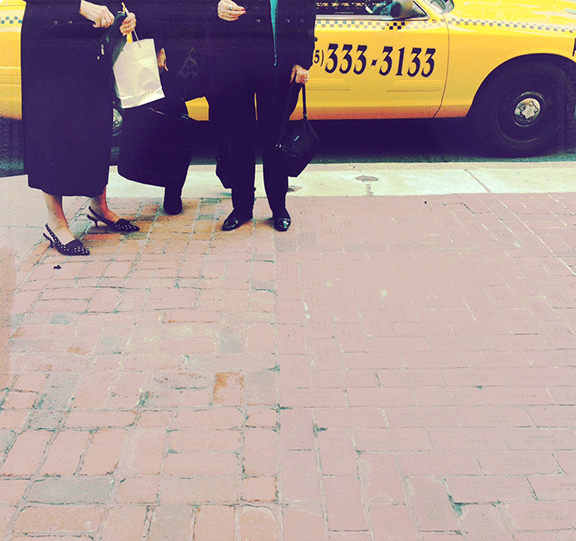
In January The Philadelphia Inquirer published a series of articles touting the rebirth of Center City. The paper reported that more than 8,235 new housing units, including new construction and converted buildings, were completed between 1997 and 2005, with 3,574 more slated for completion by the end of 2008. In June 2005, the Design Advocacy Group, a local volunteer organization, tallied current and proposed Center City construction projects: there were 130 in all, including 97 residential projects. With demand surpassing supply, the Inquirer reported, the real-estate bubble was engorged. The paper quoted prominent realtor Joanne Davidow: “Everyone asks, ‘Who is buying this?’ And the answer is everybody. Two million has become the new one million.”
The newspaper’s heralding of a downtown renaissance was no surprise to Philadelphians, who’ve watched a mushrooming of construction sites from the city’s center to its fringes. Luxury condo towers, big-name developers, and rising home prices have been the talk of the town for months, leading to a parallel mushrooming among city dwellers of armchair urban planners and amateur architecture critics. On January 23, it seemed like most of these interested parties were trying to squeeze into a standing-room-only gallery in Meyerson Hall to hear what a panel of architects, developers, critics, and historians had to say about the building boom and its effects on the city’s skyline and architectural trends.
The panel, sponsored by Penn Design and moderated by Department of Architecture Chair Detlef Mertins, coincided with the launch of an exhibition in the same hall, called “Boom: New Architecture in Philadelphia.” Posters detailing 16 notable projects, from Cesar Pelli’s Cira Centre to Rag Flats, a collection of progressive infill townhouses in blue-collar Fishtown, were hung around the room. Scant pieces of the posters could be glimpsed behind the heads and shoulders of attendees packed cheek-to-jowl. Satirical posters designed by Penn students in response to the “Boom” exhibit were hung in the hallways outside the gallery. They advertised the flipside of the boom: “Doom.”
Doom was the general vibe of presentations given by David Brownlee, professor and chair of the Department of the History of Art, and Inga Saffron, architecture critic for the Inquirer. “Booms defeat planning,” stated Brownlee, who provided historic perspective. He contrasted a rendering of William Penn and Tomas Holme’s 1683 plan for a grid-ordered, spacious Philadelphia with an engraving of how the city actually looked in the mid- to late-18th century, with homes, churches, and market stalls clustered in dense thickets along the river’s edge. “Booms inhibit architectural innovation,” Brownlee continued, showing slides of the conservative styles that characterized the booming 1800s. Dominant looks for public buildings were Greek Doric and Italian Renaissance. Federal-style red-brick rowhouses with Greek Revival door-surrounds multiplied from river to river.

“Red-brick historicism” was one of the less egregious elements Inga Saffron disparaged in her gallery of boom-driven barnacles. Saffron said that the current boom is the city’s third since the Depression. A boom in the 1950s and ’60s revitalized Society Hill. Another in the mid-1980s resulted in office buildings and condo towers, creating a new spiky skyline for Center City. But the recently completed Cira Centre is Philadelphia’s first new office building in 13 years. When a city has lain that fallow for that long, Saffron said, the government’s attitude toward planning becomes laissez-faire. Officials are so happy that people are building, they keep guidance and zoning restrictions to a minimum. Tim MacDonald of design-build firm Onion Flats said, “Philadelphia right now feels like the Wild Wild West. We can do what we do because the city allows us to. They kind of don’t know what’s going on.”
That’s a good thing when MacDonald and his firm are at the reins, but not when developers who favor “garage-houses” and “garage-podium high rises”—two more in Saffron’s gallery of horrors—are having their way. Buildings whose garages are the most prominent architectural feature at street-level threaten Philadelphia’s human scale and walkability. “Until recently,” Saffron said, “Philadelphia was a city of miniatures, of small delights, rowhouses, tiny Fabergé buildings.” The buildings were tall but not too tall. The ground floors were welcoming and accessible. Saffron applauds new construction as long as it preserves this intimacy between the public and private realms. Developer Tony Goldman, who’s steadily transforming the 13th Street corridor into Philly’s answer to SoHo, agreed. “There ought to be a class-action suit,” he said, “against all garage owners for causing the deterioration of the public realm.”
Conservative clients also limit architectural innovation. “It’s easier to do modern architecture in Rome than it is in Philadelphia,” said architect Stephen Kieran. Omar Blaik, Penn’s former senior vice president for facilities and real estate services (he resigned in March) agreed. “What makes good architecture? Good clients,” he said. Luckily, the average Philadelphian is becoming more design literate even as the city’s government remains stagnant.
“What’s missing in Philadelphia is an articulation of values,” said Saffron, who lamented that the first item on the agenda of the zoning-board president is to create more parking. The values laid out in a 1988 city plan have been trampled over and ignored, she said, in favor of the priorities of the city’s old-guard power brokers. This leaves the onus with citizen groups such as the Center City Residents’ Association, who have raised private funds to commission a comprehensive plan from an urban-planning firm. They’re determined to enforce their own sets of values on the speedily changing fabric of their neighborhood.
Whether Philadelphia will continue to boom remains to be seen. “My own hope,” said Brownlee, “is that the present boom will be small enough to be interesting.” The consensus at the panel was that banks are starting to pull back on financing for new condo buildings. And the morning after the event, the Inquirer brought news signaling that this boom may have reached its peak: Donald Trump W’68 had swooped in to unveil plans of his own for a garage-podium condo tower along the Delaware.
— Caroline Tiger C’96




